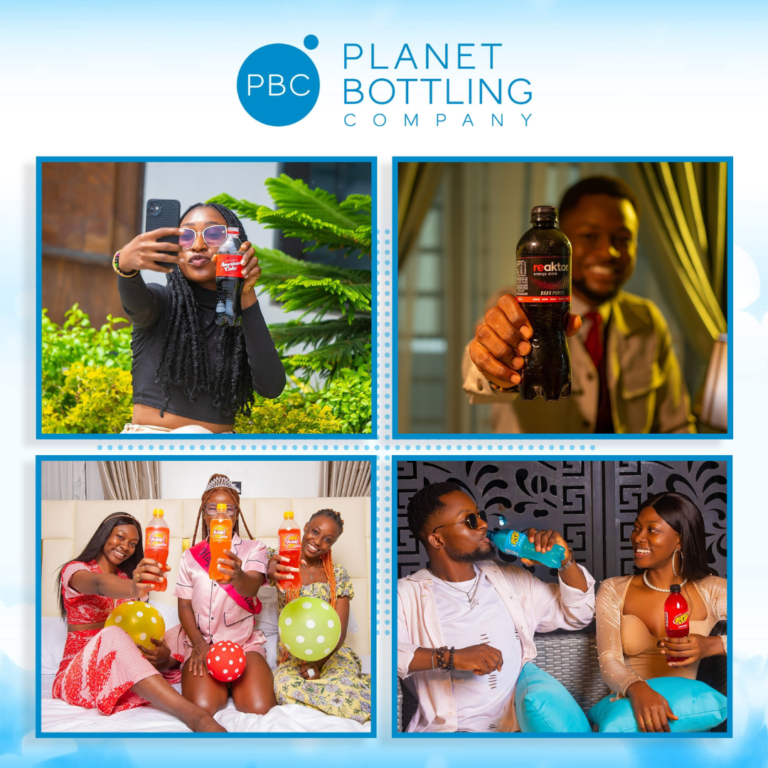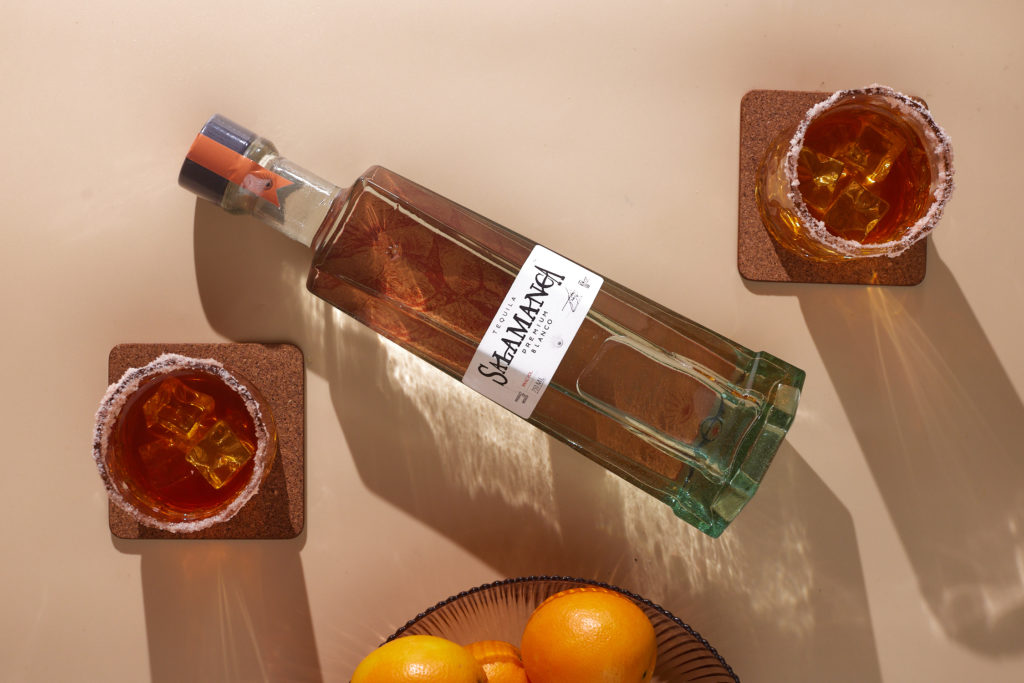Award-winning visual artists, Gbenga Adeku, Dotun Popoola and Samuel Anyanwu are converting Nigeria’s plastic, metal and textile waste into beautiful art and getting global recognition for their work.
By Gabriella Opara, Bird story agency

A typical workday in the life of Gbenga Adeku starts with sorting through materials in his studio. Then, he digitally sketches out his concepts and collaborates with contract workers to bring them to life. Based in Osun State, Nigeria, this visual artist transforms plastic waste into something valuable.
Adeku didn’t have this perspective on plastic art seven years ago. He’d recently completed his fine and applied art degree at Obafemi Awolowo University but chose to be a freelance illustrator because it paid more at the time. However, a chance encounter with Dotun Popoola, a metal sculptor, sparked his passion for plastic art.
“Dotun Popoola made it easy for me to transition from being a freelance illustrator to a full-time studio artist. His roadmap was inspirational because he is big on art that solves problems. I was keen on that. Seeing him do a lot with metal motivated me to do a lot with plastic,” said Adeku.
In 2018, Adeku started a full-time career as a professional upcycle artist. After the International Breweries Plc’s Kickstart initiative awarded him a grant, he founded his studio, Orinlanfiju, with his father, Segun Adeku.
“I read an article about how a PET bottle might survive 300 to 400 years before it breaks down and realised that plastic is present everywhere, including the air and our food. I concluded that upcycling is a better approach, to take the waste and turn it into something of higher value,” he said.
Adeku has been creating upcycle art for four years.
“I used to collect PET bottles and other recyclables at events. After setting up my studio, I started purchasing used plastics from local women. It’s quite affordable, a dozen for a penny, so I get a lot. My group and I collect, sort and use heat to reshape them. We experiment a lot; some ideas work, some don’t. But most often, we get interesting results, even if we have to spend months working on each part,” he said.
A recent collaboration with Nike will help transition Adeku’s signature art of ants and fishes to merchandise.
“Fish signify aquatic life, whereas ants stand for terrestrial life. Because ants rely on waste to sustain their economy, I think they are environmentalists. They work hard every day to find things along the way; an ant is never broke. It gets around barriers. Nigerians are extremely resilient, like ants. This idea rubbed off on Nike when they decided to open their flagship store in Nigeria. The idea of ‘Just Do It’ syncs with my art,” he explained.
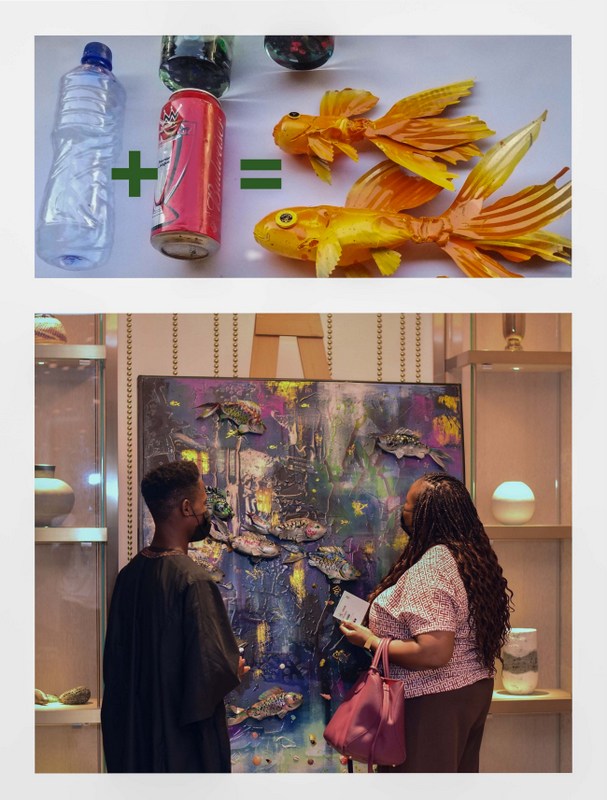
Dotun Popoola, a metal sculptor, has a similar viewpoint on his work. He recycles abandoned metal to protect the environment.
“I like what I do. It contributes to the Sustainable Development Goals to protect the environment. My metal sculptures are a protest against environmental decadence. They’re a call to repurpose and upcycle the vast amount of trash endangering the earth,” said Popoola.
There’s a distinction between recycling, repurposing and reusing. As an upcycler, I give dead things a meaningful new life while preserving the earth. I feel like I’m one of the people saving this environment while making art, playing my role powerfully,” he added.
RELATED: A Kenyan Company is Recycling Rubber Slippers and Saving the
He asserts that raising young people to be change-makers and environmentalists is another way to protect the environment. Explaining his passion for mentorship, he said:
“Over the years, I’ve tried to encourage young visual artists in Nigeria and around the world. I had ten outstanding sculptors exhibit in my studio in October. I chose five top ones, some of whom will go for residency in India, and another, in the USA. That I can make a difference in their lives is a fantastic privilege. I see it as contributing to society, which is one of my core values.”
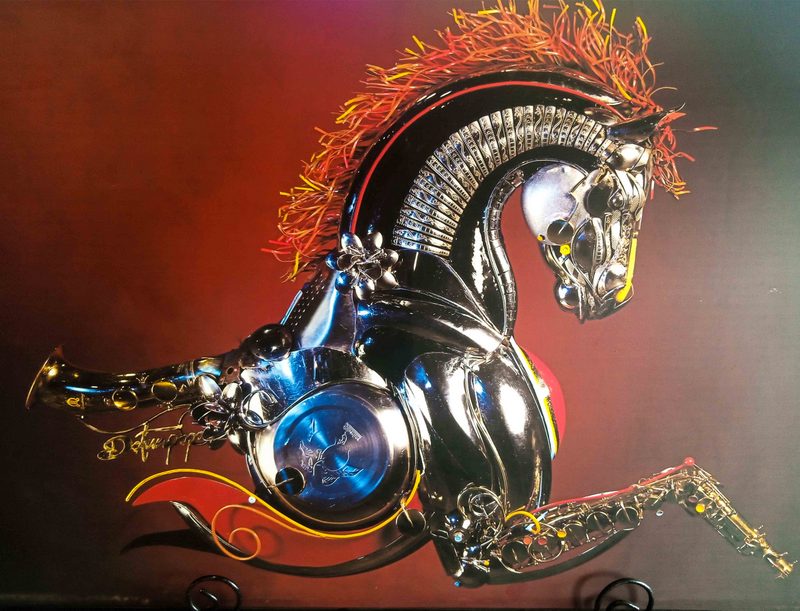
Elsewhere, Uzoma Samuel Anyanwu, who grew up in a home of tailors, had first-hand experience with the effects of fabric waste. To solve the problem, he quit his job as a full-time photographer to become a textile artist in 2012.
Anyanwu, who describes himself as an experimental artist, combines his abilities as a visual artist, photographer and upcycler to produce portraits on canvas using fabrics. He views it as a lifelong endeavour rather than merely a studio practice.
“Fabrics have long been the object of my attention. I’ve been tinkering with them since I was a baby. My mother was a seamstress, and she taught my siblings and me the trade. Many individuals view my work but don’t grasp its fundamental concepts. I’m pleased they love my work, but I also use it as an avenue to educate them about climate issues,” he said.
A decade after he started, Anyanwu is still struck by the amount of fabric waste he can get his hands on. With studios in Lagos, Owerri and Port Harcourt, he gets discarded fabric from fashion houses, tailors and markets.
“We can’t use them all up at once. The sacks of fabric we receive last us for a year or two, and we never throw them away because they’re always useful to us,” he explained.
Sourcing for fabric is easier than he thought because discarded pieces are everywhere.
“We approach some people, and some approach us. Some offer us large quantities for free, others sell them to us at low cost. The highest I’ve paid for a sack of fabric pieces is ₦8k (appox. $18). We usually get them in bulk towards year-end because that’s when tailors sew Christmas clothes, and everyone wants something trendy. Old fabric get thrown out; new ones leave pieces behind.”
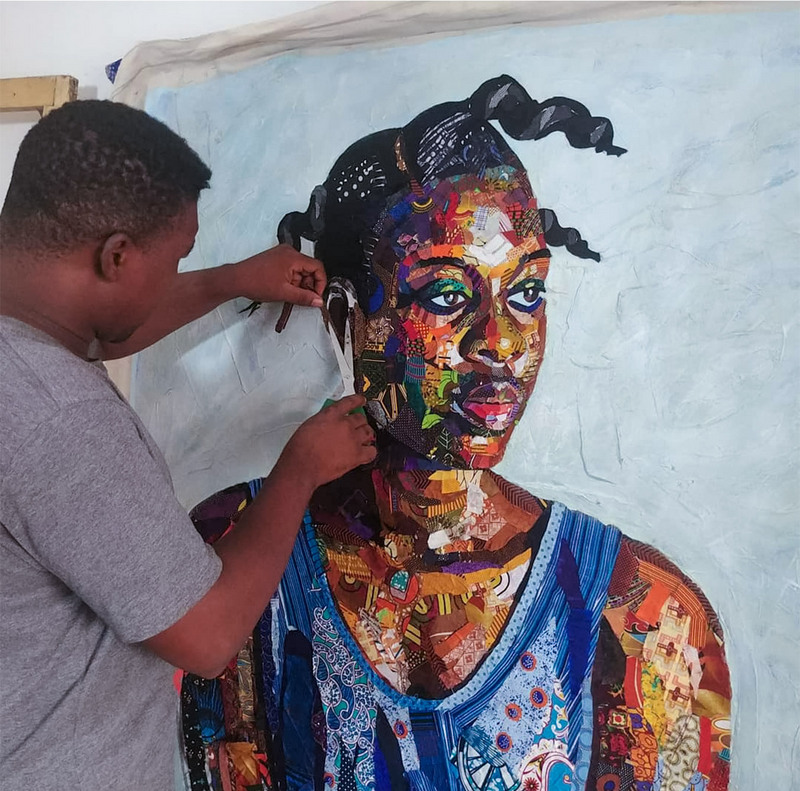
His work as a fabric artist is a community endeavour. The amount of work it takes to find fabric, learn about them, classify them, draw and make his collage art keeps his studios busy all year long. Because of how time-consuming the work is, Anyanwu outsources some of it to contract staff, which sometimes includes his neighbours.
“Telling stories is my profession. I spend a lot of time researching each fabric’s backstory to ensure I accurately convey it. I have to hire individuals on an hourly, daily or weekly basis, depending on the workload of each project. My assistants, mentees and interns participate. I occasionally ask my neighbours and relatives for help, and we all work together,” Anyanwu said.
Despite the months and years required to source art materials, one thing that drives these visual artists is the desire to see a cleaner, waste-free environment.
<script src=”https://bird.africanofilter.org/hits/counter.js” id=”bird-counter” data-counter=”https://bird.africanofilter.org/hits/story?id=6384d3dd19cce106fc6931c7&slug=three-visual-artists-in-nigeria-are-turning-trash-into-valuable-artworks” type=”text/javascript” async=”async”></script>
EDITOR’S PICK: African Animation Is on the Rise, and These 7 Shorts Prove It


